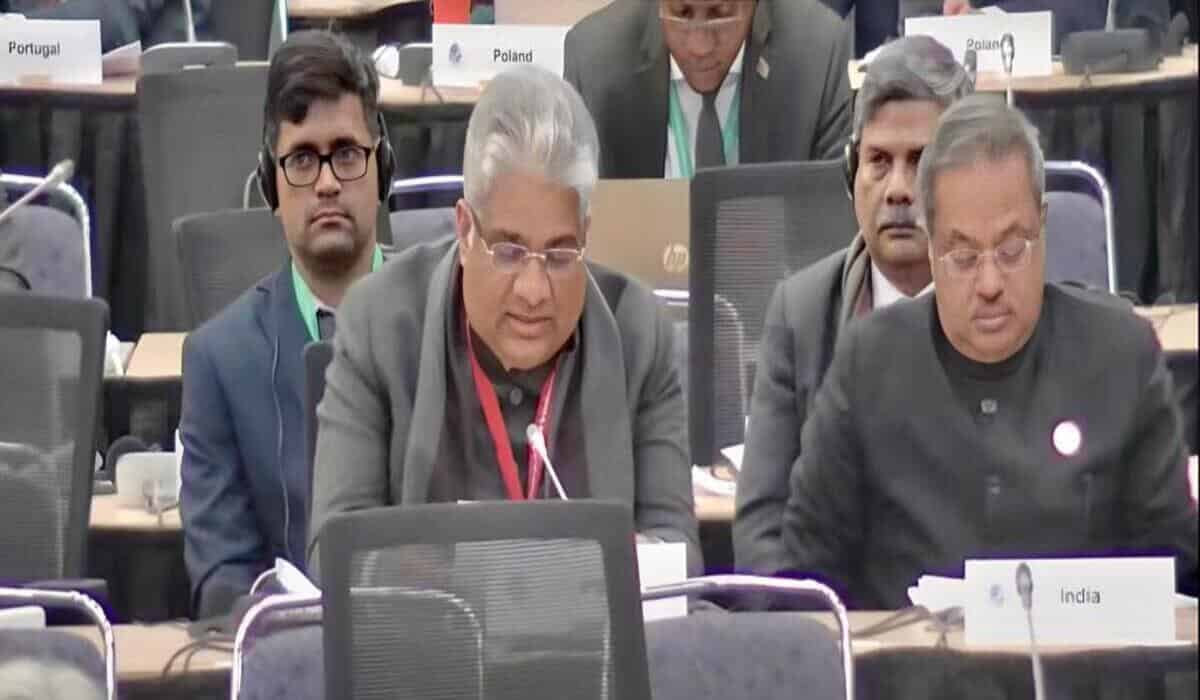
Montreal: A numerical global target for pesticide reduction in the agriculture sector is unnecessary and must be left for countries to decide, India has said at the UN biodiversity conference here in Canada.
Speaking during a high-level segment of the 15th Conference of Parties (COP15) to the Convention on Biological Diversity (CBD), Union Environment Minister Bhupender Yadav said that the agriculture sector in India, like other developing countries, is the source of “life, livelihoods, and culture for hundreds of millions,” and support to it cannot be targeted for elimination.
Currently, more than 40 per cent of India’s total workforce is employed in agriculture, according to the World Bank data released till 2019.
“Our agriculture, as for other developing countries, is the source of life, livelihoods, and culture for hundreds of millions. Such essential support to vulnerable sections cannot be called subsidies, and targeted for elimination,” Yadav said on Friday.
“While they are being rationalised, biodiversity must be promoted through positive investment,” he said.
“Similarly, a numerical global target for pesticide reduction is unnecessary and must be left to countries to decide,” the minister added.
The Target 7 of the Global Biodiversity Framework (GBF) includes the reduction of pesticides by at least two-thirds by 2030.
A report by Pesticide Action Network (PAN) India released in February reveals serious problems of pesticide usage in India and points to poor regulation of hazardous agrochemicals.
The current use pattern is implicated in widespread unauthorised uses of pesticides in India, posing threat to food safety and environmental contamination, it said.
Proponents of the target state that redirecting harmful subsidies towards biodiversity financing would go a long way towards bridging the funding gap of around USD 700 billion a year.
Currently, India alone spends about USD 30 billion (about 2.2 lakh crore) subsidising agricultural inputs, including pesticides.
The minister acknowledged that credible action is the source of strength and optimism in facing all global challenges including biodiversity.
He said despite India being home to 17 per cent of the global population, but only 2.4 per cent of the land area and only 4 per cent of its water resources, the country is forging ahead in its efforts to protect biodiversity.
“Our forest and tree cover is steadily rising together with our wildlife population. Definitive steps are being taken to return the iconic cheetah to Indian habitats,” he added.
“India has taken a quantum jump in the number of declared Ramsar sites to the current figure of 75. As a large developing country, our forest policy is challenging to implement, but our forest surveys are testimony to its success,” said Yadav.
The Ramsar Convention on Wetlands is an international treaty for the conservation and sustainable use of wetlands, signed in Iran in 1971.
The minister said that India’s balance sheet in implementing the Aichi Targets (laid out in 2010) is proactive and forward-looking and the country is on track to meet its commitments.
To counter the global biodiversity crisis, at the 2010 UN CBD COP10, almost 200 countries pledged to protect at least 17 per cent of their terrestrial environments and inland water, and 10 per cent of coastal and marine areas by 2020 (known as part of the Aichi Targets).
Yadav also said that India has taken numerous steps to keep invasive alien species at bay, but a numerical target is not feasible without the necessary baselines and relevant scientific evidence.
“The Global Biodiversity Framework must be framed in the light of science and equity and the sovereign right of nations over their resources, as provided for in the Convention on Biodiversity,” the minister said.
“If the climate is profoundly linked to biodiversity, then the principle of equity and common but differentiated responsibilities and respective capabilities must equally apply to biodiversity,” he added.
Yadav said when nature itself is under stress because of the historical disproportionate and inequities in greenhouse gas (GHG) emissions of the developed countries, the nature-based solutions to global warming and other environmental challenges are not an answer without resolute action by developed countries to measure up to their historical and current responsibilities.
However, this principle, while accepted in the UN climate talks, has been a point of contention at the biodiversity summit.
“Nature cannot protect if it is not itself protected; nature is a victim of global warming and its protective features can do little against unchecked temperature rise,” he added.
Touching on the finance gap for biodiversity conservation, Yadav said added the provisions of the means of implementation must match ambition.
“Our only source of funding remains the Global Environment Facility (GEF) that caters to multiple conventions,” he pointed out.
“The value of biodiversity to humankind also lies in its economic dimension alongside the cultural and socially sustainable use and access and benefit sharing are key to promoting biodiversity alongside the efforts to conserve protect and restore,” he added.
“What is needed today is mindful and deliberate utilisation instead of mindless and destructive consumption,” he added.
During COP15, being held here from December 7 to 19 (or longer, if parties fail to come to an agreement on schedule), about 20,000 delegates from 196 countries across the world are negotiating an eight-year plan to halt biodiversity loss by 2030 and restore nature by 2050.
The highlight of this COP would be the adoption of four goals and 22 targets as part of the Post-2020 Global Biodiversity Framework which will set the platform for biodiversity conservation.
The Indian delegation is led by Yadav, and a team of negotiators comprising senior officials from the Government of India.



